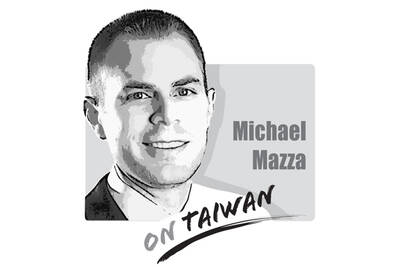The incoming government is to establish a “new southbound policy office” and a national-level think tank for ASEAN and South Asian studies. As president-elect Tsai Ing-wen (蔡英文) prepares to launch the policy, here are some suggestions:
First, Taiwan should deepen its bilateral relations with Southeast Asian countries, which are in a region rich in cultural and developmental diversity. Building a shared community requires pragmatic cooperation among regional states, but the assistance of major powers based on their strategic considerations is even more important. When it comes to the US’ return to Asia and the Trans-Pacific Partnership on one hand and China’s “peaceful rise” and strategic “One Belt, One Road” initiative on the other, an integrated ASEAN is the lowest common denominator for these two major powers.
However, Taiwan’s priority should be to improve its bilateral relationships with ASEAN and use these as an opportunity for a breakthrough when pushing for integration into the region. ASEAN affairs are highly complex and China’s “coordinating country” approach deserves consideration.
When former Chinese president Hu Jintao (胡錦濤) and former Chinese premier Wen Jiabao (溫家寶) were in office, Vietnam was the coordinating country between China and ASEAN, and with Chinese President Xi Jinping (習近平) and Chinese Premier Li Keqiang (李克強), Thailand has been the coordinating country. Singapore has played a similar role in cross-strait affairs and Taiwan-ASEAN relations.
When looking for another coordinating member of ASEAN in addition to Singapore, Vietnam might be a good option.
Second, there should be a shared focus on both Taiwan and its ASEAN counterparts. Past and current southbound policies focus on unilateral Taiwanese investments in Southeast Asia, but Tsai’s new policy is to include three improvements. It would not solely focus on investment; there would be bilateral rather than unilateral interaction — for example by attracting high-tech talent to Taiwan resulting in a win-win situation; and it would link Taiwan with Southeast and South Asian countries, as well as with the Indian subcontinent, creating a regional strategy for South Asia and Southeast Asia.
Tsai’s new policy stresses the advantage of having “Southeast Asia in Taiwan,” as it includes a plan to help second-generation Southeast Asian immigrants in the hope that they provide a fresh force to help Taiwan integrate with ASEAN. This plan is a “project hope” of strategic significance. However, if Taiwan cannot improve the functions of its representative offices in the region to boost the power of “Taiwan in Southeast Asia,” it would be unable to build a favorable environment and create opportunities for a smooth entry into the region, in which case the new policy would fail to achieve its innovative strategic objective.
Third, Taiwan should focus on expertise and professionalism among its diplomats. Since the beginning of the 21st century, Taiwan’s diplomatic strength in Southeast Asia has been gradually weakening. As President Ma Ying-jeou (馬英九) attaches little importance to diplomatic affairs, the Ministry of Foreign Affairs has lost its role in the decisionmaking process and it has been a long time since diplomatic expertise was respected. As a result, it has been difficult for outstanding diplomats to give full play to their professional knowledge and abilities, while Taiwan has lost its voice and ability to act in the international community.
The success of Tsai’s new policy depends on a focus on expertise and professionalism.
Hugh Chen is president of the Taiwan Association for Southeast Asian Studies and a professor in the Graduate School of Southeast Asian Studies at National Chi Nan University.
Translated by Eddy Chang

Is a new foreign partner for Taiwan emerging in the Middle East? Last week, Taiwanese media reported that Deputy Minister of Foreign Affairs Francois Wu (吳志中) secretly visited Israel, a country with whom Taiwan has long shared unofficial relations but which has approached those relations cautiously. In the wake of China’s implicit but clear support for Hamas and Iran in the wake of the October 2023 assault on Israel, Jerusalem’s calculus may be changing. Both small countries facing literal existential threats, Israel and Taiwan have much to gain from closer ties. In his recent op-ed for the Washington Post, President William
Taiwan-India relations appear to have been put on the back burner this year, including on Taiwan’s side. Geopolitical pressures have compelled both countries to recalibrate their priorities, even as their core security challenges remain unchanged. However, what is striking is the visible decline in the attention India once received from Taiwan. The absence of the annual Diwali celebrations for the Indian community and the lack of a commemoration marking the 30-year anniversary of the representative offices, the India Taipei Association and the Taipei Economic and Cultural Center, speak volumes and raise serious questions about whether Taiwan still has a coherent India
A stabbing attack inside and near two busy Taipei MRT stations on Friday evening shocked the nation and made headlines in many foreign and local news media, as such indiscriminate attacks are rare in Taiwan. Four people died, including the 27-year-old suspect, and 11 people sustained injuries. At Taipei Main Station, the suspect threw smoke grenades near two exits and fatally stabbed one person who tried to stop him. He later made his way to Eslite Spectrum Nanxi department store near Zhongshan MRT Station, where he threw more smoke grenades and fatally stabbed a person on a scooter by the roadside.
Recent media reports have again warned that traditional Chinese medicine pharmacies are disappearing and might vanish altogether within the next 15 years. Yet viewed through the broader lens of social and economic change, the rise and fall — or transformation — of industries is rarely the result of a single factor, nor is it inherently negative. Taiwan itself offers a clear parallel. Once renowned globally for manufacturing, it is now best known for its high-tech industries. Along the way, some businesses successfully transformed, while others disappeared. These shifts, painful as they might be for those directly affected, have not necessarily harmed society